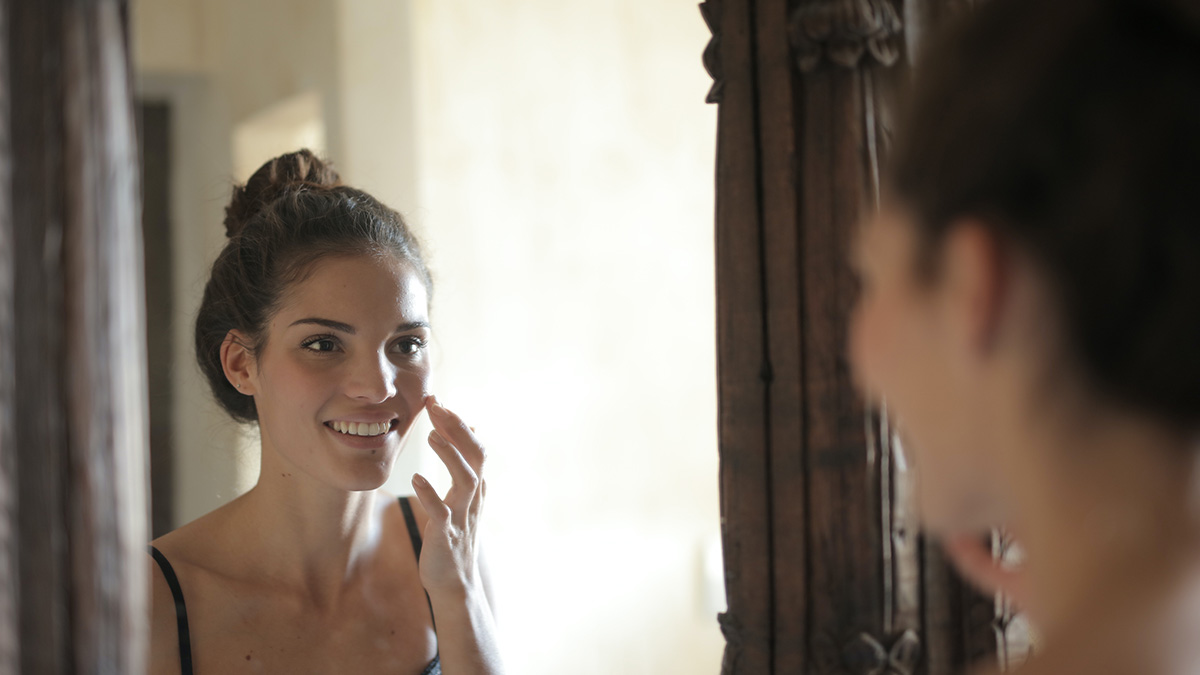As the air gets colder and drier in winter, the moisture content of our skin begins to drop, leading to dry, itchy, and red skin. Skin redness is a very common skin problem that affects all skin types. However, people with dry skin or with a history of any skin problem are more prone to it. It can occur in any area of your body, but parts that are continuously exposed to cold and harsh climates are most likely to be affected.
Let’s take a look at a few symptoms and causes associated with skin rashes in winters.
11 Critical Signs & Symptoms Of Red Spots On Skin

- Skin redness
- Swelling
- Rough or scaly patches
- Red spots on skin
- Bumps
- Pain or burning sensation
- Flaking
- Itching
- Sensitivity
- Blisters
- Red itchy spots
5 Common Causes Of Skin Redness In Winter
- Excessive use of room heaters and / or spending too much time near the fireplace can cause your skin to dry out
- Cleansing your skin too often or using harsh cleansers, which can strip the natural oils of the skin, making it prone to dryness and redness especially during cold weather
- What causes redness on face also includes taking hot and long showers during winter as this may end up causing skin irritation
- Cold and harsh winds are also one of the main red face causes. The wind strips your skin of natural oils and moisture
- Sunburn and sun damage may also cause red spots on skin
6 Simple Home Remedies To Treat Red Spots On Skin
Skin redness and red spots on cheeks that are caused by cold and dry weather can often be treated by using some simple and effective home remedies. But before using any of these remedies, make sure to perform a patch test.
A few home remedies for redness on face that you can use to treat this condition are:
1. Keep Your Skin Moisturised
Moisturising your skin properly at regular intervals is the most important step in treating red spots on the skin. Other than using a moisturiser that suits your skin type, you may also use the following oils for keeping your skin hydrated:
- Coconut oil: It contains high amounts of vitamins, fat, and antioxidants. It locks moisture into our skin and prevents it from drying out. Use it on damp skin or after applying moisturiser for best results
- Jojoba oil: This oil is considered the most effective natural moisturiser. Its structure closely resembles that of our skin’s sebum. It soothes skin redness and inflammation and does not clog pores. People with oily skin type can also use this without any concern due to its non-comedogenic properties. Jojoba oil also makes an excellent redness around lips home remedy
- Avocado oil: Jojoba oil is packed with essential fatty acids and vitamins. It moisturises by deeply penetrating into our skin and soothes it from dryness and redness
2. Milk And Honey Mask
Milk acts as a gentle cleanser and honey is a natural humectant. This mask keeps your skin moist and soft, thus keeping problems like red spots on face at bay. It also treats inflammation and skin redness. Here’s how to use this remedy to treat red skin on face.
- Whip up a mask by mixing milk and honey in a 2:1 ratio and applying it to the skin
- Leave it for 30 minutes before washing it off with lukewarm water
- Pat dry your skin and follow up with a moisturiser
3. Aloe Vera Gel
Aloe vera gel contains excellent healing properties. Using it as a mask or moisturiser helps in calming, repairing the skin, and treating redness on the nose and red pigmentation on the face.
4. Oatmeal Bath
Taking an oatmeal bath eases inflammation and helps in treating dry, red and itchy skin.
- Sprinkle about one cup of colloidal oatmeal in lukewarm water
- Soak for ten minutes
- Pat yourself dry and follow up with a moisturiser
5. Avocado Mask
Avocado makes for a very healthy skin food. This avocado mask will deeply moisturise your skin and keep away problems like redness on the nose and dry skin during winters.
- Make an avocado mask by mashing a ripe avocado and mixing it with 2 teaspoons of curd
- Apply a thin layer on the affected area and let it sit for about 30 minutes before washing it off
6. Shea Butter
Shea butter contains high amounts of vitamins and fatty acids, making it an excellent product for treating red spots on the face caused by dryness. It works as an emollient and locks the moisture in our skin, keeping it healthy and hydrated.
7 Useful Tips To Maintain Healthy Skin During Winters
Continuous exposure to cold and harsh outdoor wind and indoor heat during winters can take a toll on your skin. You can prevent skin redness and maintain healthy skin by following a few simple steps.
- Modify your skincare routine to meet the requirements of your skin. Usually, in winter, the skin needs an extra boost of moisture. Incorporate oils and moisturisers according to your skin type in your routine
- Invest in a good humidifier. It helps in keeping your skin from drying out by maintaining the humidity levels in your surroundings
- Avoid hot water baths since hot water can make your skin dry by stripping its natural oils. Instead, use lukewarm water. Do not forget to moisturise right after
- Always wear sunscreen to maintain healthy skin even in winters
- Use gentle cleansers for your hands and body to keep them soft. Cleansers with high alcohol and fragrance content may dry out your skin
- Mildly exfoliate your skin once a week to get rid of dead skin cells. This will also add to the effectiveness of your moisturisers and serums
- Drink adequate amounts of water to stay hydrated and modify your eating habits according to the season
Winters and dry skin often go hand in hand. By adjusting your skincare routine and by making a few basic lifestyle changes, you can maintain healthy skin throughout the winter season. This easy-to-follow redness on face treatment, home remedies and skincare tips will come in handy in keeping your skin healthy, hydrated and glowing. However, if you are still experiencing the symptoms despite trying home remedies, you may want to consult a professional. Bored of using the same facepacks? Try this curd (dahi) face pack and let us know how it changed your skin.

